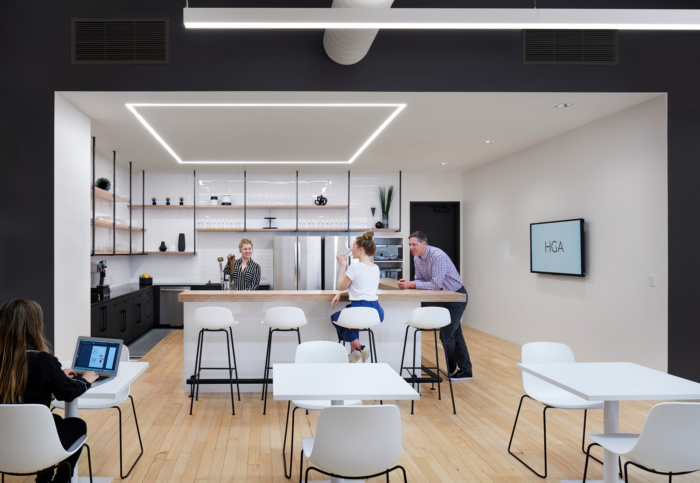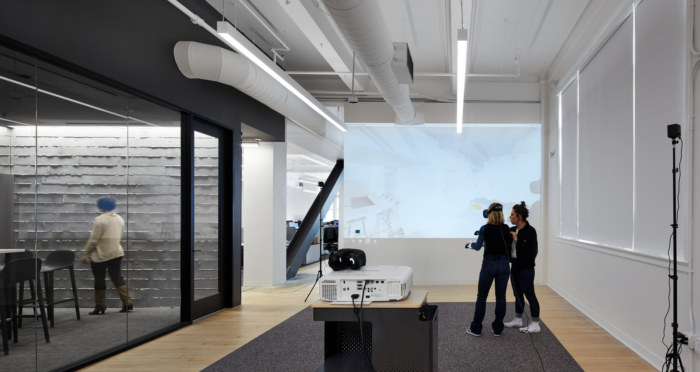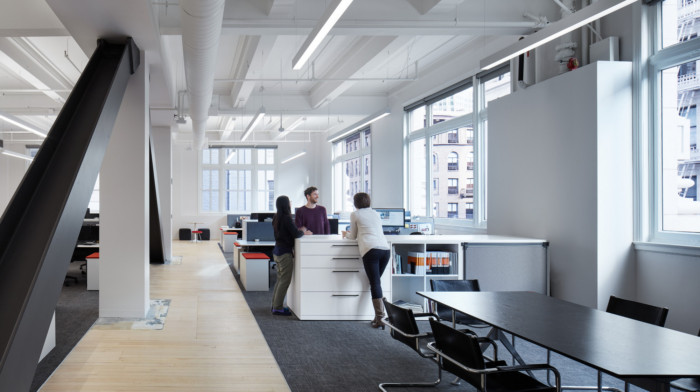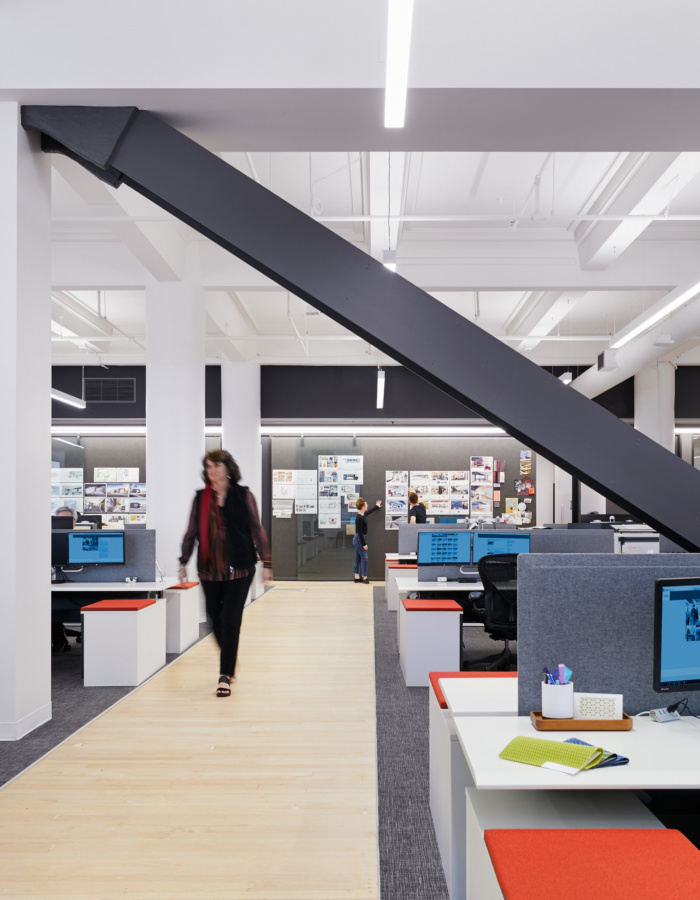
HGA Offices – San Francisco
HGA took careful consideration internally when planning and executing the concept for their new San Francisco office, a landscape fit for architectural and design ingenuity and creativity.
HGA realized the inclusive design for their architectural office relocation in San Francisco, California.
HGA’s San Francisco office supports a sense of shared ownership among team members through an inclusive planning process.
Architects like to surround themselves with aesthetically sound workplaces that will inspire their work. So much so, they often seek a workshop-like environment that suggests a roll-up-your-shirtsleeves approach to the creative process.
As such, HGA designed its own workplace relocation in downtown San Francisco as a workshop for creative inspiration. From the outset, the team avoided certain pitfalls of designing one’s own space, such as overthinking decisions and concepts or making assumptions about how individuals work—or should work.
Instead, potential pitfalls were vetted through an inclusive, interactive programming/planning process that included internal questionnaires, one-on-one staff interviews, and visioning sessions to ensure that each department and staff function was represented—from Senior Designers to Operations, Human Resources, IT, and Marketing.
This process resulted in a vibrant workplace where all team members personally and professionally feel invested.
Efficient Program
Occupying a full floor in a nine-story concrete masonry office building downtown, the open work plan encourages a fluid workstyle among team members throughout the day.Just inside from the elevator lobby, the common spaces—reception, copy/print room, workroom, huddle rooms, mother’s room, kitchen, break room, and VR studio—are grouped within a core on the west half of the floor plan. Further inside, three various-sized conference rooms and a library line up along the north floor-to-ceiling window wall, with hoteling, pre-conference, and collaboration spaces just outside the conference rooms.
Finally, open work stations are grouped along the south and east window walls within an open plan.
Design Elements
Throughout the workplace, design elements suggest a sense of tongue-in-cheek fun through textures, finishes, and lighting—communicating to staff and visiting clients that design is a creative process.For example, exposed “concrete” walls projecting an industrial building aesthetic are simple applied tiles. Reclaimed wood laths serving as sound-absorbing panels recall traditional timber construction (instead of the building’s concrete construction). Custom workstation dividers provide privacy while custom filing units next to workstations allow team members to flip a front panel between whiteboard and pin-up boards to accommodate critiques and team huddles.
Additionally, high-efficiency lighting enhances aesthetics. Skewed tube lighting along the main hallway visually directs wayfinding. Oversized dome light fixtures with ornate plasterwork figures in meeting rooms pay homage to the previous furniture company tenant. And timed dimmers office-wide modulate illumination throughout the day—creating an invisible transition from artificial to natural light.
A Working Showroom
Since move-in, the new workplace has truly become a showroom/workshop for design. Team members hosting client visits use the space to point out design elements that will inspire their own office design, from the functional open floor plan that encourages collaboration, to the discreetly successful mechanical systems, to the strategic use of natural and artificial light. The new office, as the survey results indicate, enhances a sense of shared ownership among team members.
Design: HGA
Photography: Corey Gaffer










































